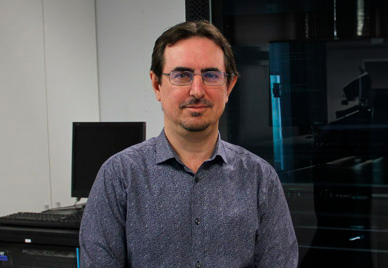The medical imaging area of the ITACA Institute has been conducting research on automatic medical image processing for more than a decade. Specifically, the area’s work has focused on solving quality improvement problems and automatically extracting diagnostic information from medical images (especially Magnetic Resonance Imaging (MRI)).. We cover the full range of image processing techniques, from automatic filtering and homogenization of MR images to developing advanced superresolution techniques. We aim to transform medical imaging data into more accurate, detailed, and usable information, significantly improving the diagnostic process. We also develop automatic analysis techniques and segmentation methods for tissues and brain structures, facilitating detailed, precise examinations.
Our software is able to provide fully automatic volume measurements of subcortical grey matter structures from MRI images. The volBrain system consists of a pipeline of modular processes developed in the MATLAB environment. A unique feature of the software is that it has been developed using a SAS (Software As a Service) methodology running remotely on a server and serving requests through a web platform.

Our team of experts is dedicated to leveraging artificial intelligence and advanced image processing algorithms to provide clearer, high-resolution images, enhancing early detection, diagnosis accuracy, and overall patient care. Trust us to transform your medical imaging data, providing an innovative tool that empowers clinicians and aids in more informed medical decision-making.
Applications
- Neurological Diagnostics: Diagnosis and monitoring of neurodegenerative diseases in which the volume of brain structures is affected, e.g. Alzheimer’s, Huntington’s and Parkinson’s diseases.
- Cancer Diagnostics: Enhancing tumour detection and monitoring in various body tissues.
- Radiology Departments: Providing advanced imaging capabilities to assist in a wide range of diagnostic procedures.
- Research and Development: Facilitating medical research through more detailed, high-resolution imaging.
- Education and Training: Serving as a tool for teaching complex anatomical structures and conditions.
- Artificial Intelligence in Medicine: Improving training data for machine learning algorithms in medical applications.



